
Mark Whalan
Biography
Dr. Mark Whalan is the Robert and Eve Horn Professor of English and Head of English at the University of Oregon. He was educated in the UK, receiving his B.A. in English and American literature with first-class honors from the University of Warwick in 1995, his M.A. in English Literary Studies from the University of Durham in 1996, and his Ph.D. in American Cultural Studies from the University of Exeter in 2002. He taught at the Open University, University of Exeter, and Vassar College before joining the University of Oregon in 2011, and has served as Department Head of English since 2020. His work focuses on US modernist literature and the literature of the Harlem Renaissance, with a particular focus on the cultural impact of World War One in the US, cultures of masculinities in the period, Black modernism, and state/citizenship studies.
He has published six books, including four single-authored monographs, and has won research studentships and fellowships from the Arts and Humanities Research Council, the British Academy, and the Oregon Humanities Center. He has twice won essay prizes from the British Association of American Studies, and in 2024 he was named Outstanding Department Head by the University of Oregon. His essays and reviews have appeared in Modern Fiction Studies, American Art, English Literary History, American Literary History, Modernism/modernity, the Journal of American Studies, First World War Studies, Twentieth-Century Literature, African American Review, and the Journal of American History, amongst others. With Paul Peppis and Helen Southworth, he co-organized the 2022 Modernist Studies Association conference, and has served on the editorial boards of the Journal of American Studies and Modernism/modernity. Since 2016, he has co-edited, with Martin Halliwell of the University of Leicester, the Modern American Literature and the New Twentieth Century book series with Edinburgh University press, which currently has eighteen titles in its list.
He is currently working on a cultural history of cause célèbre trials in the 1920s and 1930s, tentatively entitled Trial of the Century: The Culture of Cause Célèbre trials 1921-1937.
Graduate Advising
I have chaired numerous doctoral committees at Exeter and at the University of Oregon, mainly in modernist studies but also on early twentieth-century popular culture, transnational experimental cultures of the twentieth century, African American culture 1900-1950, radical literature of the 1930s, environmental humanities, and middlebrow studies. A full list is available on my CV, and I welcome inquiries from prospective graduate students about potential projects in these fields.
Publications
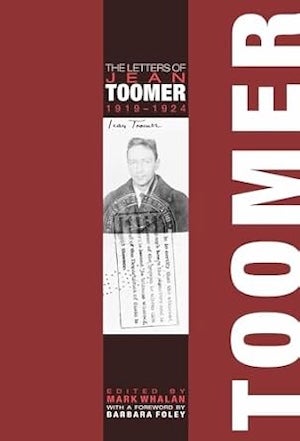
The Letters of Jean Toomer, 1919-1924, ed. Mark Whalan (University of Tennessee Press, 2006)
Considered deeply controversial because of his experimental writing style and complex racial self-definition, Jean Toomer was a major figure of the Harlem Renaissance and in the twentieth-century modernist movement. The Letters of Jean Toomer, 1919-1924 is the first-ever annotated collection of the author's correspondence. The letters included in the volume were written in the five years surrounding Toomer's publication of his seminal work, Cane (1923). As such, they lend unique insight into the life, aesthetics, politics, and work of a central figure in American literature of the early twentieth century. Mark Whalan's compilation offers a vital document for understanding the contexts, intellectual debates, and tensions undergirding Toomer's work, including his simultaneous feelings of attraction to and estrangement from rural Southern life, the influence of technology on race and urban existence in America, and the contradictory pulls of folk culture and modernist experimentation. The collection also charts the motives underlying Toomer's abandonment of the style that distinguished Cane, and his growing fascination with the teachings of the mystic G. I. Gurdjieff in 1924. On a more personal level, Toomer's struggles with creative isolation and the small world of Black Washington society--and later with the New York literary avant garde--are made evident, as are his intense and often domineering relationships with women. His correspondents constituted a who's who of 1920s intellectual life, including Alain Locke, Georgia Douglas Johnson, Countée Cullen, Waldo Frank, Sherwood Anderson, Lewis Mumford, Alfred Stieglitz, Georgia O'Keefe, and Hart Crane.
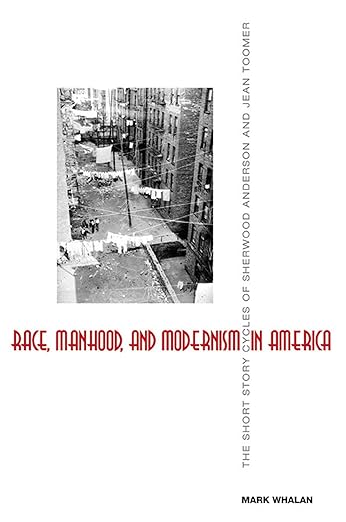
Race, Manhood, and Modernism in America: The Short Story Cycles of Sherwood Anderson and Jean Toomer (University of Tennessee Press, 2007)
This book offers the first extended comparison between American writers Sherwood Anderson (1876-1941) and Jean Toomer (1894-1967), examining their engagement with the ideas of “Young American” writers and critics such as Van Wyck Brooks, Paul Rosenfeld, and Waldo Frank. This distinctively modernist school was developing unique visions of how race, gender, and region would be transformed.
Focusing on Anderson’s Winesburg, Ohio (1919), and Toomer’s Cane (1923), Race, Manhood, and Modernism in America brings Anderson and Toomer together in a way that allows for a thorough historical and social contextualization that is often missing from assessments of these two literary talents and of modernism as a whole. The book suggests how the gay subcultures of Chicago and the traumatic events of the Great War provoked Anderson’s anxieties over the future of male gender identity, anxieties that are reflected in Winesburg, Ohio. The book also discusses Anderson’s primitivistic attraction to African American communities and his ambivalent attitudes toward race, attitudes that were embedded in the changing cultural and gendered landscape of mass mechanical production.
The book next examines how Toomer aimed to broaden the racial basis of American cultural nationalism, often inspired by the same cultural critics who had influenced Anderson. He rejected the ethnographically based model of tapping the “buried cultures” of ethnic minorities developed by his mentor, Waldo Frank, and also parted with the “folk” aesthetic endorsed by intellectuals of the Harlem Renaissance. Instead, Toomer'’ monumental Cane turned to discourses of physical culture, machine technology, and illegitimacy as ways of conceiving of a new type of manhood that refashioned commonplace notions of racial identity.
Taken together, these discussions provide a fresh, interdisciplinary appraisal of the importance of race to “Young America” and give new insight into some of the most crucial texts of U.S. interracial modernism.
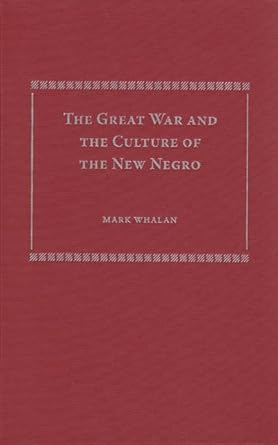
The Great War and the Culture of the New Negro (University Press of Florida, 2008)
More than 200,000 African American soldiers fought in World War I, and returning troops frequently spoke of "color-blind" France. Such cosmopolitan experiences, along with the brutal, often desegregated no-man's-land between the trenches, forced African American artists and writers to reexamine their relationship to mainstream (white) American culture. The war represented a seminal moment for African Americans, and in the 1920s and 1930s it became a touchstone for such diverse cultural concerns as the pan-African impulse, the burgeoning civil rights movement, and the redefinition of black masculinity. In examining the legacy of the Great War on African American culture, this book considers the work of such canonical writers as W.E.B. Du Bois, Langston Hughes, Nella Larsen, and Alain Locke. In addition, it considers the legacy of the war for African Americans as represented in film, photography, and anthropology, with a particular focus on the photographer James VanDerZee.
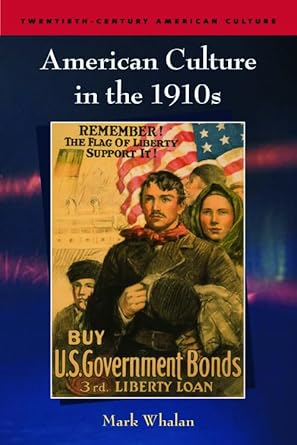
American Culture in the 1910s (University of Edinburgh Press, 2010)
This book provides a fresh account of the major cultural and intellectual trends of the United States in the 1910s, a decade characterized by war, the flowering of modernism, the birth of Hollywood, and Progressive interpretations of culture and society. Chapters on fiction and poetry; art and photography; film and vaudeville; and music, theatre, and dance explore these developments, linking detailed commentary with focused case studies of influential texts and events. These range from Tarzan of the Apes to The Birth of a Nation, from the radical modernism of Gertrude Stein and the Provincetown Players to the earliest jazz recordings. A final chapter explores the huge impact of the First World War on cultural understandings of nationalism, citizenship, and propaganda.
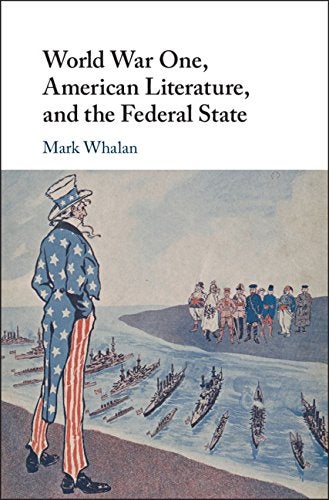
World War One, American Literature, and the Federal State (Cambridge University Press, 2018)
This book argues that World War One's major impact on US culture was not the experience of combat trauma, but rather the effects of the expanded federal state bequeathed by US mobilization. Writers bristled at the state's new intrusions and coercions, but were also intrigued by its creation of new social ties and political identities. This excitement informed early American modernism, whose literary experiments often engaged the political innovations of the Progressive state at war. Writers such as Wallace Stevens, John Dos Passos, Willa Cather, Zane Grey, and Edith Wharton were fascinated by wartime discussions over the nature of US citizenship, and also crafted new forms of writing that could represent a state now so complex it seemed to defy representation at all. And many looked to ordinary activities transformed by the war - such as sending mail, receiving healthcare, or driving a car - to explore the state's everyday presence in American lives.
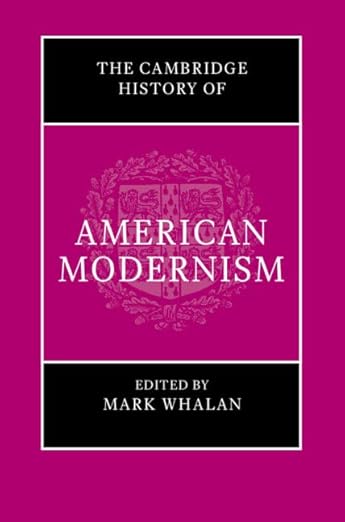
The Cambridge History of American Modernism (Cambridge University Press, 2023)
The Cambridge History of American Modernism examines one of the most innovative periods of American literary history. It offers a comprehensive account of the forms, genres, and media that characterized US modernism: coverage ranges from the traditional, such as short stories, novels, and poetry, to the new media that shaped the period's literary culture, such as jazz, cinema, the skyscraper, and radio. This volume charts how recent methodologies such as ecocriticism, geomodernism, and print culture studies have refashioned understandings of the field, and attends to the contestations and inequities of race, sovereignty, gender, sexuality, and ethnicity that shaped the period and its cultural production. It also explores the geographies and communities wherein US modernism flourished-from its distinctive regions to its metropolitan cities, from its hemispheric connections to the salons and political groupings that hosted new cultural collaborations.
Teaching
Courses:
- ENG 104: Introduction to Fiction
- ENG 216: American Literature 1850-present
- ENG 241: Introduction to African American Literature
- ENG 360: African American Authors of the Harlem Renaissance
- ENG 392: American novel 1900-present
- ENG 399: Literature and the Modern State: Race, Surveillance, War
- ENG 407: Modern American Poetry
- ENG 670: Cultures of American Modernism

